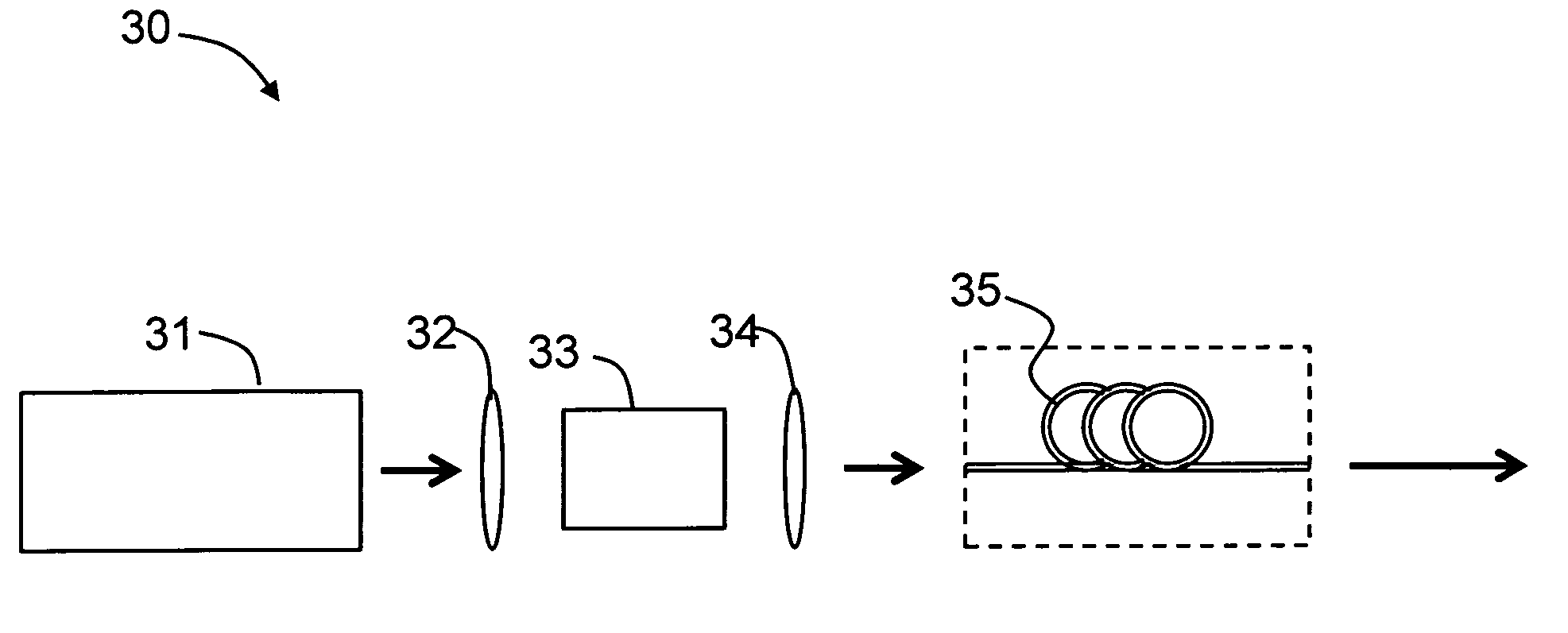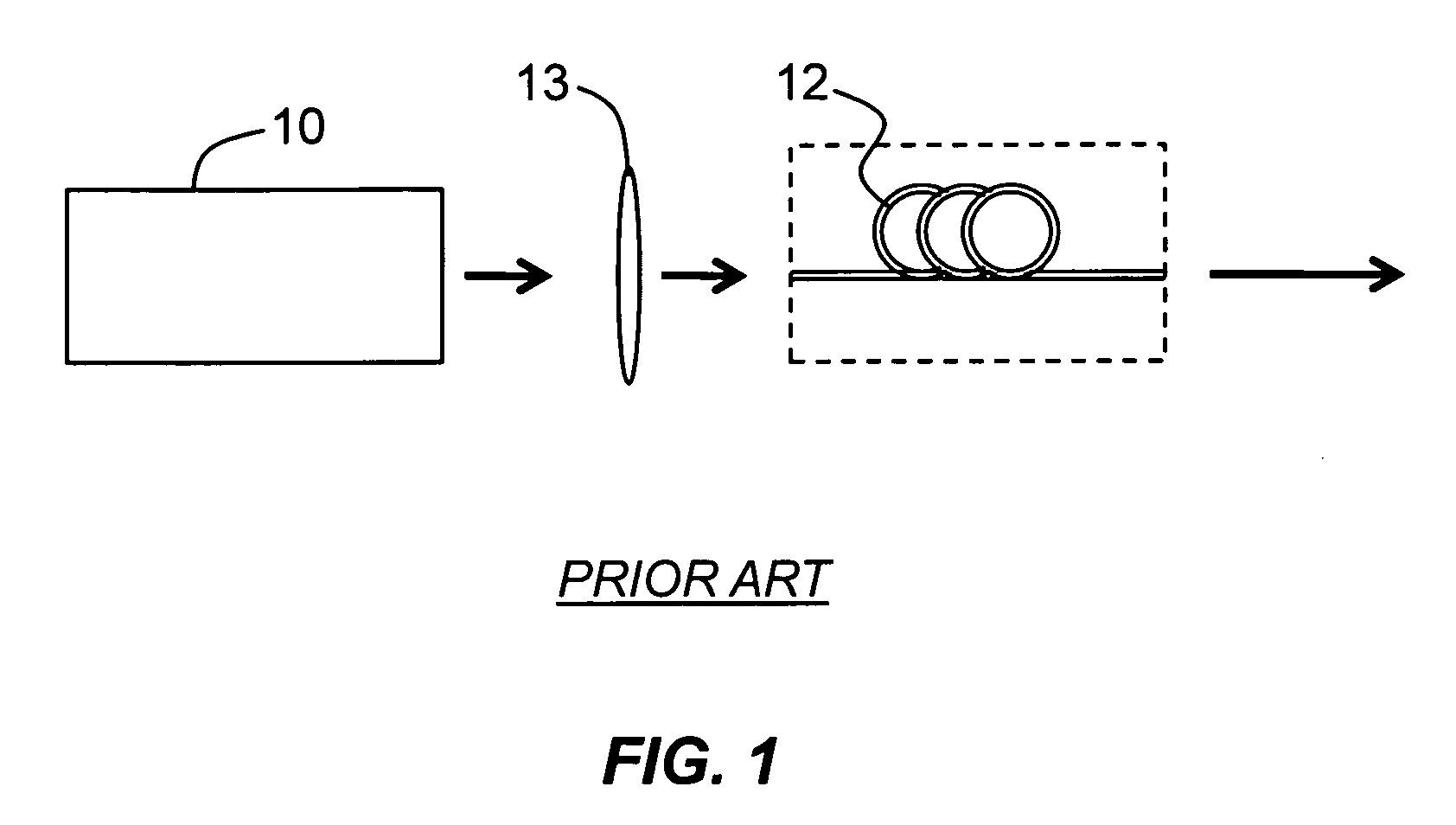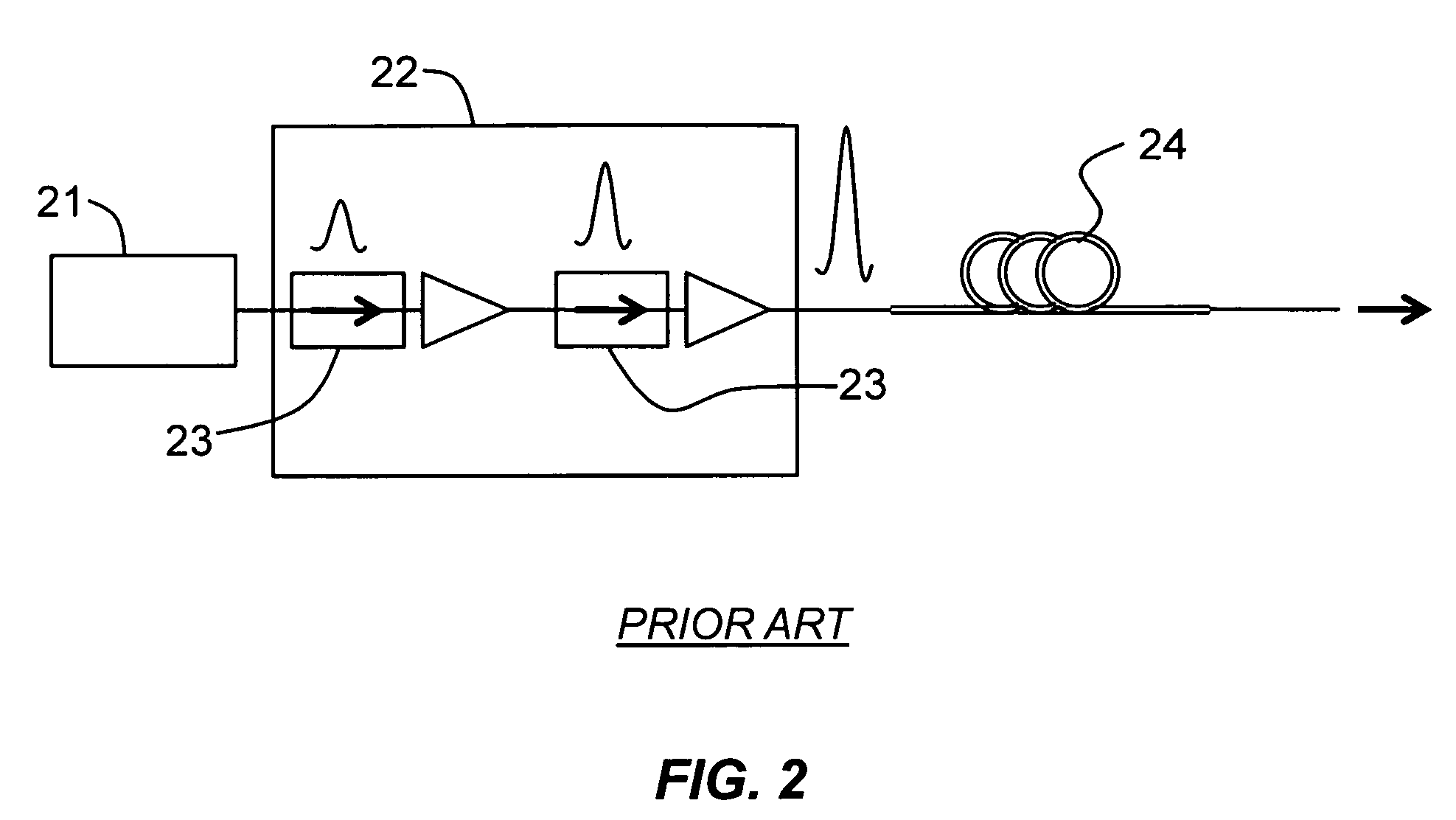Optical pulse sources
- Summary
- Abstract
- Description
- Claims
- Application Information
AI Technical Summary
Benefits of technology
Problems solved by technology
Method used
Image
Examples
first embodiment
[0037]Referring to FIG. 3, the invention provides an optical pulse source 30 comprising an optical pump laser source 31, a microstructured optical fiber 35 and a gating device 33 (also referred to below as “gating means”33).
[0038]The optical pump laser 31 in this example takes the form of a diode pumped solid state (DPSS) laser source (for example a mode-locked 1064 nm laser operating at 76 MHz), which is operable to produce pulses of approximately 200 nJ energy and duration 10 ps. The output pulses from the pump laser 31 pass through lens (e.g., a set of lenses) 32 to the gating means 33, which here comprises an optical modulator, synchronised to the pump laser 31 and operable so that it can gate the pump pulses and produce a pulse train having a reduced repetition rate (Rr), where Rr=Rf / N, where Rf is the pump laser fundamental frequency (in this example 76 MHz) and N is a positive integer. The pulses output from the modulator gating device 33 are injected via optics 34 into the m...
fifth embodiment
[0059]In the invention, the use of a fiber laser incorporating a pulse-picker element allows for the delivery of higher energy supercontinuum lasers within the visible region of the spectrum.
[0060]In some examples, it is important to be able to scale the energy from the supercontinuum optical pulses—particularly within the visible region of the spectrum. Using the same system configuration as FIG. 4, it is possible to scale the average supercontinuum energy by reducing the pump pulse repetition rate but increasing the pump pulse duration to hundreds of picoseconds. This effectively results in a higher energy 1064 nm fundamental input pulse (the peak power of the pulse is limited within the fiber amplifier by nonlinear interactions dominated by stimulated Raman scattering (SRS)) and a corresponding increase in the average output supercontinuum pulse energy across the supercontinuum spectra exiting the PCF.
[0061]By increasing the pulse duration, one therefore increases the average pul...
sixth embodiment
[0065]the invention comprises a pulse-picked optical pulse source 40, as shown in FIG. 6, in which the pump pulse repetition rate is reduced to 1 MHz, and the pulse duration increased to approximately 200 ps. In order to generate the required spectral broadening within the PCF 44, 40 KW of pulse peak power is attained from the pulsed pump source 41 at an average output power of 8 W, resulting in a 2 W supercontinuum, with 1 mW / nm power spectral density in the visible spectral region, corresponding to approximately 1 nJ / nm energy spectral density.
PUM
 Login to View More
Login to View More Abstract
Description
Claims
Application Information
 Login to View More
Login to View More - R&D
- Intellectual Property
- Life Sciences
- Materials
- Tech Scout
- Unparalleled Data Quality
- Higher Quality Content
- 60% Fewer Hallucinations
Browse by: Latest US Patents, China's latest patents, Technical Efficacy Thesaurus, Application Domain, Technology Topic, Popular Technical Reports.
© 2025 PatSnap. All rights reserved.Legal|Privacy policy|Modern Slavery Act Transparency Statement|Sitemap|About US| Contact US: help@patsnap.com



